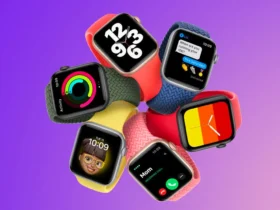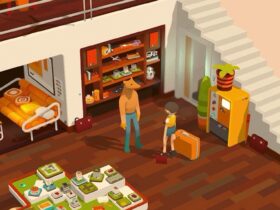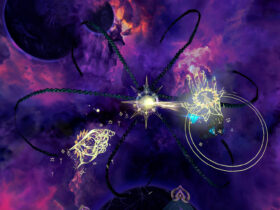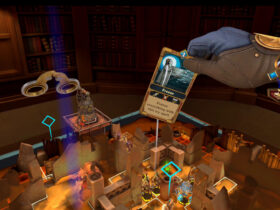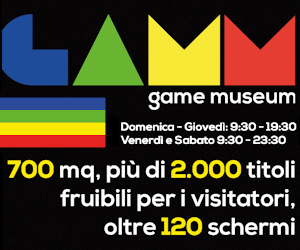Today as never before virtual reality is part of our daily lives. If there is a growing interest in the world of culture and research to demonstrate the application of this technology to different areas (art, history and preservation of ancient works) , the need to discover new ways of sharing and spreading our heritage is emerging as a strong task. It is a new way of thinking the cultural enjoyment itself, as an experience, not only participatory, but also completely immersive. In this context, we find Mubil, a project carried out by the Laboratory for Perceptual Robotics PERCRO, Institute TeCIP Sant’Anna (Pisa, Italy) and the Norwegian University of Science and Technology in Trondheim, born in order to involve users in rediscovery of ancient manuscripts.
Oculus Rift Italy has interviewed Dr. Marina Belli, a degree in Computing Humanities (specializing in Graphic Design, Interactive , Virtual Environments ), currently Researcher at the Perceptual Robotics Laboratory PERCRO in the field of Emerging Digital Technologies, who worked in the Information Landscape project of Mubil.
M: Mubil is a beautiful project born from the collaboration between the International Laboratory for Perceptual Robotics PERCROand the Norwegian University of Science and Technology in Trondheim, what is it exactly?
Mubil (its name comes from the combination of Museum and Library) is an interdisciplinary project that aims to use Virtual Reality technologies as a new tool for cultural preservation and dissemination. In particular, the project has allowed us to make virtually available some volumes of the Norwegian library Gunnerus, through the development of three different applications: an Information Landscape, a virtual book and a real 3D digital lab, where visitors were able to interact in person with the ancient collections. These applications have been developed in order to attract and strengthen the public’s interest in art and culture, thus allowing the library to create a new space of contact with its users, creating a new level of communication with them.
M: We have seen the creation of two different concepts, in particular, the Information Landscape. What is this concept about?
Usually we think of virtual environments as environments that aim to faithfully reproduce reality. Instead there are different types of environments, ranging from extreme realism to pure abstraction. In the latest category are the Landscapes of Information (Information Landscape), three-dimensional environments that are ideal to represent vast amounts of information. They contain objects such as texts, sounds, images and 3D models that are represented on different surfaces, spatially organized and connected by links avaible in space (the equivalent of the links in the web). The aim of an Information Landscape is not to accurately represent reality, but to take visitors on a journey into a world completely abstract, allowing an immediate interpretation and discovering of the surrounding space. The idea is to place the user directly inside information, so his learning comes from exploring that world. Within the project Mubil has been chosen to develop an Information Landscape based on the manuscript of the Norwegian Hans Hansen Lilienskiold, kept in the library Gunnerus, about the journey made by the Author from Norway to Italy. The landscape was structured on different levels, containing a wealth of information (geographical, historical and artistic) of the city of Pisa, in which the user can move freely.
M : What about the CAVE , what are their function?
Virtual environments such as the Information Landscape can be enjoyed in both desktop and immersive mode. In the latest case, users are introduced inside a cave. The CAVE (the first prototype was presented in 1992 during the SIGGRAPH Chicago) have emerged as a versatile immersive structures created specifically for the use of different types of virtual environments. They are real rooms where the walls are constituted by a rear-projection screens. Obviously the term ” CAVE ” comes from the famous Platonic myth of the Cave, in which prisoners were living in a fictional world. In 2011 the Laboratory PERCRO welcomed the X- Cave, one of the largest in Europe , with dimensions 4x4x3 meters. The 3D images are reproduced by eighteen projectors hd -ready workstation connected to six high-performance graphics at a resolution of more than sixteen million pixels . The complexity of these structures and the various interfaces used to manipulate objects and operate with them makes the interaction very realistic and ensures a strong feeling of “presence”, where the user feels completely absorbed from the environment and perceives to be somewhere else (being there).
M: What were the main difficulties in achieving the transformation of a work of the past , such as the Diary of Hans Lilienskiold in an virtual environment?
It was definitely a challenge to transpose a book so ancient in a so modern form, very different from the original. All objects, placed in strategic point of the landscape of information, are intended to guide the user in his journey, enhancing the traditional enjoyment. For example, the audio that plays the banging noise of hooves and that you feel every time a link is activated, leads the user to the same metaphorical journey of Lilienskiold on horseback. The text sequences illustrate and comment on images and 3D models of the various monuments of city of Pisa (like the Baptistery , the Tower, etc. . encountered by the same or Lilineskiold and described in his book) , and so give the user an additional level of interpretation of the landscape. Everything is aimed at reconstructing the text, but turning it into a new experience that is both as faithful as possible to the one narrated by Lilienskiold.
M: There has been resistance on the part of the traditional reading on printed paper lovers? Have you thought about a particular expedient to involve this kind of public wary of new technologies?
This is a very sensitive issue because, on one hand it is true that virtual technologies have a certain charm especially for the younger generation, on the other the greatest fear of many (especially historians, professors, and museum curators ) is to desecralise Cultural and artistic works. The risk is certainly present, and to overcome this problem we needed to find the right balance between tradition and innovation. To this end, professionals today are usually not related to each other (art historians, archaeologists, engineers, computer) , cooperating with the intent to create paths that can adapt to different types of users. Obviously virtual environments are not candidates to replace the traditional systems, but they can still be a considerable added value to significantly improve the quality of learning. Regarding the Information Landscape dedicated to Hans Lilienskiold for example, we decided to add a layer containing within the virtual pages of the original book , totally digitized. In this way, we tried to keep even more contact with the original work.
M: Italy is a extremely rich country in regard to the historical and artistic heritage . There are currently similar projects , dedicated to teaching and cultural diffusion?
It ‘s true, Italy is a country of rare cultural richness, but unfortunately it is not utilized enough. Today many institutions such as museums and libraries feel the need to innovate, and make works of art usually reserved for a niche audience more interesting and eye-catching. In fact, despite these places are particularly suited to trigger processes of learning and acquiring new knowledge, still today the concept of “museum” is often associated with something boring and old. New technologies can help instead to subvert this report and, as we have seen, can be used to build new kinds of educational activities with the aim of regaining a wider audience, no longer passive but active and participatory. In general today in Italy there are other companies who are looking to work in this direction. As a research speciaolized laboratory, we have the opportunity and the fortune to manage projects involving the use of advanced virtual technologies.
M: Oculus Rift VR device is currently the most popular. How would you see the realization of a project similar to Mubil for Oculus Rift?
In our laboratory we have more Oculus Rift and we are using them for many applications in various fields. We in fact added to XVR, the framework for the development of virtual reality applications created by our laboratory and used by other laboratories in Europe, the support for Oculus Rift, and among the various demos, we have already made a version of the Information Landascape of Mubil displayed with Oculus Rift. We expect short of making available an online version, thanks to the fact that XVR is also available as a plug-in for your browser.
We leave with a fascinating concept video of the Information Landscape. Happy reading!
[youtube id=”u3sb7kfYA6k” width=”600″ height=”350″]
Clicca sulla copertina per leggere








